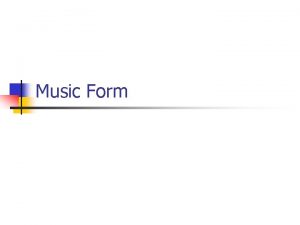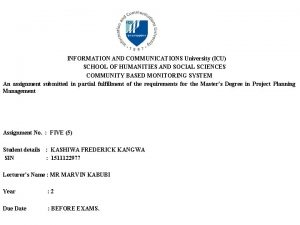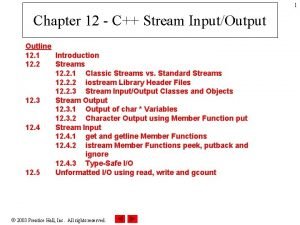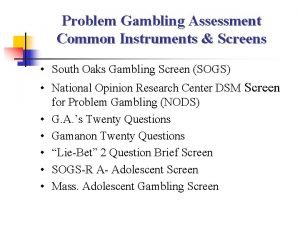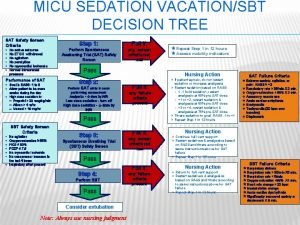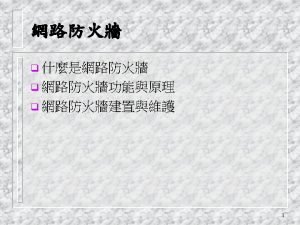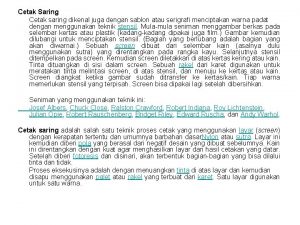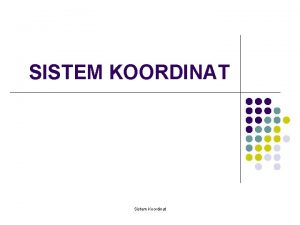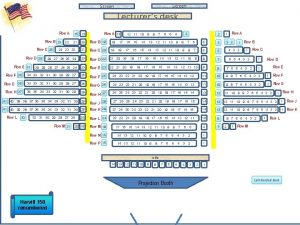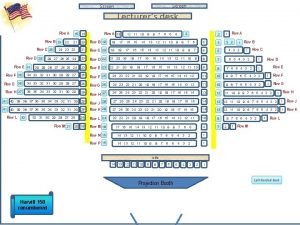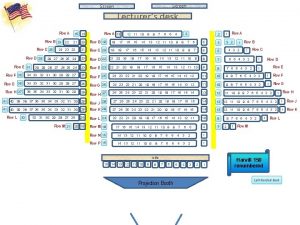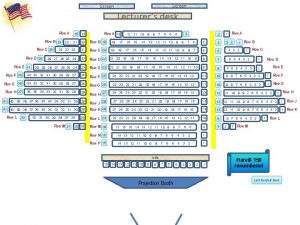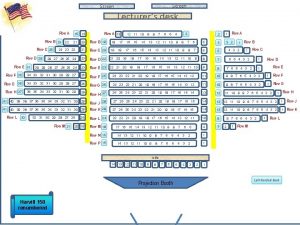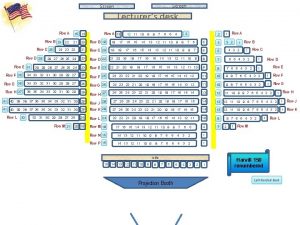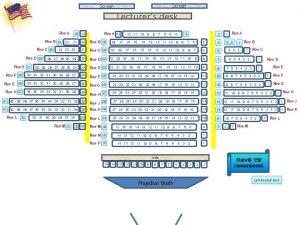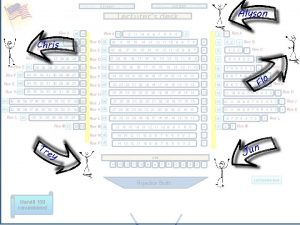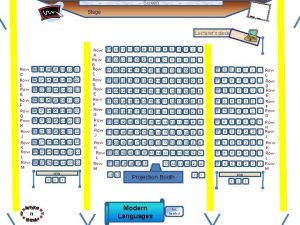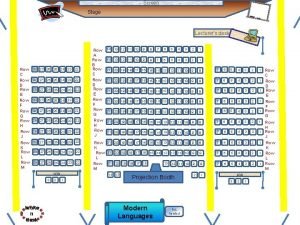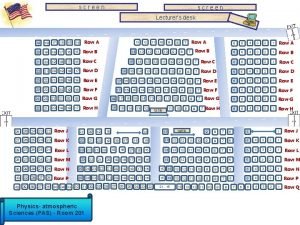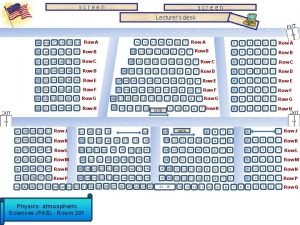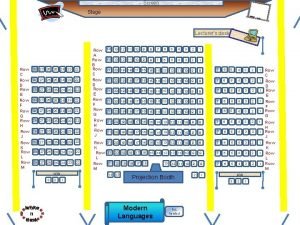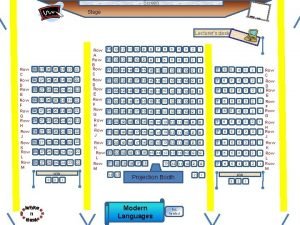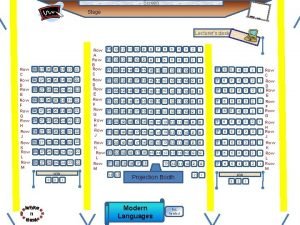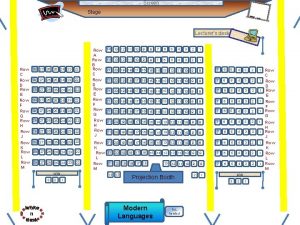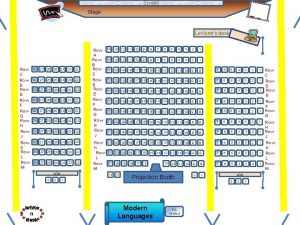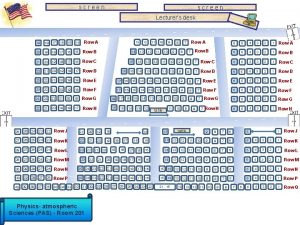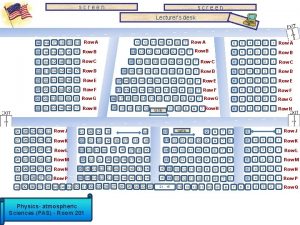screen Lecturers desk Row A 13 8 Row
















































- Slides: 48

screen Lecturer’s desk Row A 13 8 Row A 7 16 15 14 20 19 18 17 16 15 Row B 21 20 19 18 17 16 Row C 22 21 20 19 18 17 Row D 23 22 21 20 19 18 Row E 17 16 15 14 13 12 11 10 9 8 7 23 22 21 20 19 18 Row F 17 16 15 14 13 12 11 10 9 8 7 24 23 22 21 20 19 Row G 18 22 21 20 19 18 17 Row H 16 14 16 24 23 22 Row J 21 20 19 18 27 26 25 24 23 Row K 22 21 20 19 28 27 26 25 24 Row L 23 28 27 26 25 24 Row M 30 29 28 27 26 Row N 25 24 23 30 29 28 27 26 Row P 25 24 23 38 9 10 17 25 39 11 18 26 40 12 19 37 36 35 34 33 23 32 22 22 31 30 Physics- atmospheric Sciences (PAS) - Room 201 21 18 9 10 8 Row B 7 4 3 2 1 Row A 6 5 4 3 2 1 Row B 14 13 12 11 10 9 8 7 Row C 6 5 4 3 2 1 Row C 15 14 13 12 11 10 9 8 7 Row D 6 5 4 3 2 1 Row D Row E 6 5 4 3 2 1 Row E Row F 6 5 4 3 2 1 Row F Row G 6 5 4 3 2 1 Row G Row H 6 5 4 3 2 1 Row H 15 14 17 18 11 5 15 16 15 12 14 13 13 12 16 12 11 10 11 table 14 19 20 21 17 13 6 9 10 8 7 9 8 7 table 13 9 8 7 6 5 1 Row J 15 14 13 12 11 10 9 8 7 6 5 4 3 2 1 Row K 17 16 15 14 13 12 11 10 9 8 7 6 5 4 3 2 1 Row L 14 13 12 11 10 9 8 7 6 5 4 3 2 1 Row M 20 19 18 17 16 15 22 21 20 19 18 17 16 15 14 13 12 11 10 9 8 7 6 5 4 3 2 1 Row N 22 21 20 19 18 17 16 15 14 13 12 11 10 9 8 7 6 5 4 3 2 1 Row P 5 4 3 2 1 Row Q 29 28 27 26 25 24 23 22 21 - 15 14 13 12 11 10 9 8 7 6

MGMT 276: Statistical Inference in Management Fall 2015

g tartin s e ek ll b We’ next we this

Announcements Na Ma me em jor ph ail on e#

Use this as your study guide By the end of lecture today 9/3/15 Nominal, Ordinal, Interval, Ratio Field observation/naturalistic research Surveys and questionnaire design Random versus non-random sampling techniques Questionnaire design and evaluation

Remember bring your writing assignment forms notebook and clickers to each lecture A note on doodling Talking or whispering to your neighbor can be a problem for us – please consider writing short notes. More information on how to register clicker soon

Homework due- (Thursday, September 10 th) On class website: please print and complete homeworksheet #2 & 3 a We’ll be using this for writing assignment on Thursday

Just for Fun Assignments Go to D 2 L - Click on “Content” Click on “Interactive Online Just-for-fun Assignments” Complete Assignments 1 – 7 Please note: These are not worth any class points and are different from the required homeworks

Schedule of readings Before next exam: Please read Chapters 1 - 4 in Open. Stax Supplemental reading (Appendix D) Supplemental reading (Appendix E) Supplemental reading (Appendix F) Please read Chapters 1, 5, 6 and 13 in Plous Chapter 1: Selective Perception Chapter 5: Plasticity Chapter 6: Effects of Question Wording and Framing Chapter 13: Anchoring and Adjustment

So far, Measurement: observable actions Theoretical constructs: concepts (like “humor” or “satisfaction”) Operational definitions Validity and reliability Independent and dependent variable Random assignment and Random sampling Within-participant and between-participant design Single blind (placebo) and double blind procedures Discrete versus continuous variables

Categorical versus Numerical data Categorical data (also called qualitative data) - a set of observations where any single observation is a word or a number that represents a class or category Numerical data (also called quantitative data) - a set of observations where any single observation is a number that represents an amount or count

Categorical data (also called qualitative data) - a set of observations where any single observation is a word or a number that represents a class or category Numerical data (also called quantitative data) - a set of observations where any single observation is a number that represents an amount or count Handedness - right handed or left handed Family size Hair color GPA Ethnic group Age (Time since birth) Breed of dog Temperature (Kelvin) Yearly salary Temperature (Fahrenheit) Gender - male or female Please note this is a binary variable

Categorical data (also called qualitative data) - a set of observations where any single observation is a word or a number that represents a class or category Numerical data (also called quantitative data) - a set of observations where any single observation is a number that represents an amount or count Please note we’ll use the bottom half for something else On a the top half of a writing assignment form please generate two examples of categorical data and two examples of numerical data

What are the four “levels of measurement”? Categorical data • Nominal data - classification, differences in kind, names of categories • Ordinal data - order, rankings, differences in degree Numerical data • Interval data - measurable differences in amount, equal intervals • Ratio data - measurable differences in amount with a “true zero”

What are the four “levels of measurement”? Ratio ute Absol o zer s c insi Intr ring e ord e gori e t a C es Nam Most ric nume s d Unit l l size s a u u f Eq erval ning a e int m s c insi r t n I g erin ord ries st Lea ric e num rie tego Ca es ego Nam Cat aching Appro ric Nume est ak We Interval Ordinal Nominal

What are the four “levels of measurement”? Categorical data • Nominal data - classification, differences in kind, names of categories • Ordinal data - order, rankings, differences in degree Numerical data • Interval data - measurable differences in amount, equal intervals • Ratio data - measurable differences in amount with a “true zero” Gender - male or female Family size Jersey number Place in a foot race (1 st, 2 nd, 3 rd, etc) Handedness - right handed or left handed

What are the four “levels of measurement”? Categorical data • Nominal data - classification, differences in kind, names of categories • Ordinal data - order, rankings, differences in degree Numerical data • Interval data - measurable differences in amount, equal intervals • Ratio data - measurable differences in amount with a “true zero” Age Ethnic group Temperature Yearly salary Hair color Telephone number Breed of dog

Please note : page 29 in text


What are the four “levels of measurement”? Categorical data • Nominal data - classification, differences in kind, names of categories • Ordinal data - order, rankings, differences in degree Numerical data • Interval data - measurable differences in amount, equal intervals • Ratio data - measurable differences in amount with a “true zero” Look at your examples of qualitative and quantitative data. Which levels of measurement are they?


Homework review You are looking to see if “class standing” affects the “level of sales”. Class standing Independent variable (IV): _______ 4 Number of levels of IV: ________ (how many means? ) Quasi or True experiment: _______ Level of sales Dependent variable: _________ Between or within participant design: _______ In this study, what is the operational definition of “class standing”? Classification based on units earned In this study, what is the operational definition of “level of sales”? Number of bags of peanuts sold

Homework review You are looking to see whether “type of program” has an effect on “body transformation”. Please identify the following variables: Type of program Independent variable (IV): _______ Number of levels of IV: ________ (how many means? ) 2 Quasi or True experiment: _______ True Dependent variable: _________ Body transformation Between or within participant design: _______ What is the operational definition of “type of program”? What is the operational definition of “body transformation”? Type of program = type of diet (regular versus programmatic diet) Body transformation = number of pounds lost

Homework review You are looking to see which driving choice is most efficient. So you ask each driver to drive each of the three routes and time themselves on how long it takes. Please identify the following variables: Type of route Independent variable (IV): _______ (how many means) 3 Number of levels of IV: ________ driving efficiency Dependent variable: _________ Within Between or within participant design: _______ What is the operational definition of “driving efficiency”? What is the operational definition of “driving choice”? Driving efficiency = travel time (measured in minutes) Driving choice = route taken

Homework review

Homework review Notice that the operational definition of each construct matters

Homework review gender 2 quasi salary between nominal ratio

Name of City 3 Quasi- experiment Temperature Between Nominal Interval

Homework review city 3 quasi temperature between nominal interval Must be complete and must be stapled Will hand in assignment in couple minutes

Preview of Questionnaire Homework There are five parts: • Statement of Objectives • Questionnaire itself (which is the operational definitions of the objectives) • Data collection and creation of database • Creation of graphs representing results • Generate a formal memorandum describing results

Preview of Questionnaire Homework There are five parts: • Statement of Objectives • Questionnaire itself (which is the operational definitions of the objectives) • Data collection and creation of database • Creation of graphs representing results • Generate a formal memorandum describing results

Preview of Questionnaire Homework

Preview of Questionnaire Homework

Preview of Questionnaire Homework

Preview of Questionnaire Homework

Questionnaire Homework

Questionnaire Homework Average of these three scores

Questionnaire Homework Average of these two scores

Questionnaire Homework Variable label and scale values

Questionnaire Homework Average of these three scores

Questionnaire Homework Average of these two scores

Questionnaire Homework Variable label and scale values

Questionnaire Homework

Preview of Questionnaire Homework There are five parts: • Statement of Objectives • Questionnaire itself (which is the operational definitions of the objectives) • Data collection and creation of database • Creation of graphs representing results • Generate a formal memorandum describing results

Preview of Questionnaire Homework There are five parts: • Statement of Objectives • Questionnaire itself (which is the operational definitions of the objectives) • Data collection and creation of database • Creation of graphs representing results • Generate a formal memorandum describing results

5 Principles of questionnaire construction 1. Make sure items match research objectives & Identify what constructs you are trying to understand (Be explicit in identifying your constructs) 2. Responders have the answers to our questions • We are tapping into their attitudes/beliefs/ knowledge • Understand your research participants • “think like” the responders / consider their sensibilities 3. Use appropriate, natural and familiar language • use appropriate, and familiar language (for them)

5 Principles of questionnaire construction 3. Assessment should feel easy and clear, unthreatening • Be clear, precise and concise (short questions) • Minimize use of contingency questions • Start with most friendly (least threatening) questions first • then at the end “now a couple questions about you” (foot in the door phenomenon) • Avoid double negatives • For example: Agree or disagree? Teachers shouldn’t have less contact with parents 4. Avoid ambiguity and bias in your items • Avoid “double-barreled” questions - Difficult to interpret answers • Avoid leading or loaded questions - Can introduce bias • Consider problem of acquiescence – Ask question in different ways (careful with coding)

 Is row row your boat a binary form
Is row row your boat a binary form Raquel anido
Raquel anido Future managers lecturers guide
Future managers lecturers guide Lecturers without borders
Lecturers without borders List of lecturers at icu zambia
List of lecturers at icu zambia Screen small screen offscreen
Screen small screen offscreen Single row functions in sql
Single row functions in sql Betty botter bought some butter
Betty botter bought some butter Reinforcement and annulment of waves
Reinforcement and annulment of waves Screen direction
Screen direction Ge business screen
Ge business screen Cin.fail in c++
Cin.fail in c++ Infrared touch screen advantages and disadvantages
Infrared touch screen advantages and disadvantages Legal aspects of software engineering
Legal aspects of software engineering Pc embossing plate plant
Pc embossing plate plant Disadvantages of output devices
Disadvantages of output devices Aslo antibody
Aslo antibody Xfinity home automation
Xfinity home automation South oaks gambling screen
South oaks gambling screen Sbt safety screen
Sbt safety screen Screen host firewall
Screen host firewall Frustrated total internal reflection
Frustrated total internal reflection 5 point hantavirus screen
5 point hantavirus screen Ethical principles screen
Ethical principles screen Screen design and layout in hci
Screen design and layout in hci Cetak saring dikenal juga dengan istilah …. *
Cetak saring dikenal juga dengan istilah …. * How do these screen objects afford?
How do these screen objects afford? Obs screen recorder
Obs screen recorder Warna tulisan/gambar pada klise idealnya adalah
Warna tulisan/gambar pada klise idealnya adalah Illustrate the concept of screen output and keyboard input
Illustrate the concept of screen output and keyboard input How is a window screen similar to a cell membrane
How is a window screen similar to a cell membrane Screen reader
Screen reader Barney os 2 download
Barney os 2 download Electric grading screen
Electric grading screen Dentistry
Dentistry Screen line
Screen line Fms deep squat corrective exercises
Fms deep squat corrective exercises Macam macam koordinat
Macam macam koordinat Sca packaging
Sca packaging Postpartum stomach pain
Postpartum stomach pain First screen feasibility analysis
First screen feasibility analysis Bruce margolis
Bruce margolis Weatherlll
Weatherlll Screen truepress 344
Screen truepress 344 Screen 12 qbasic
Screen 12 qbasic Reflective layer of intensifying screen
Reflective layer of intensifying screen What is screen direction?
What is screen direction? Touchless touchscreen
Touchless touchscreen Vsdatant.sys
Vsdatant.sys
